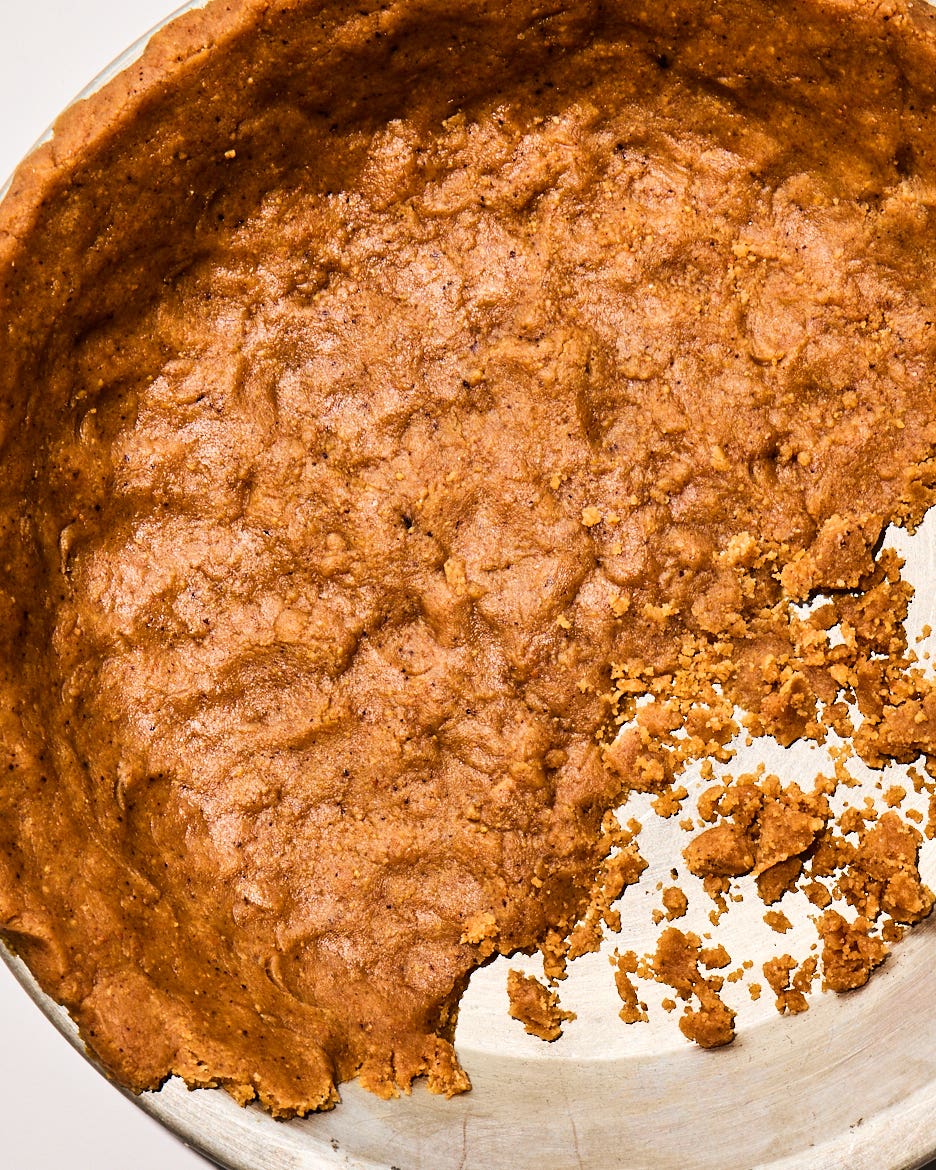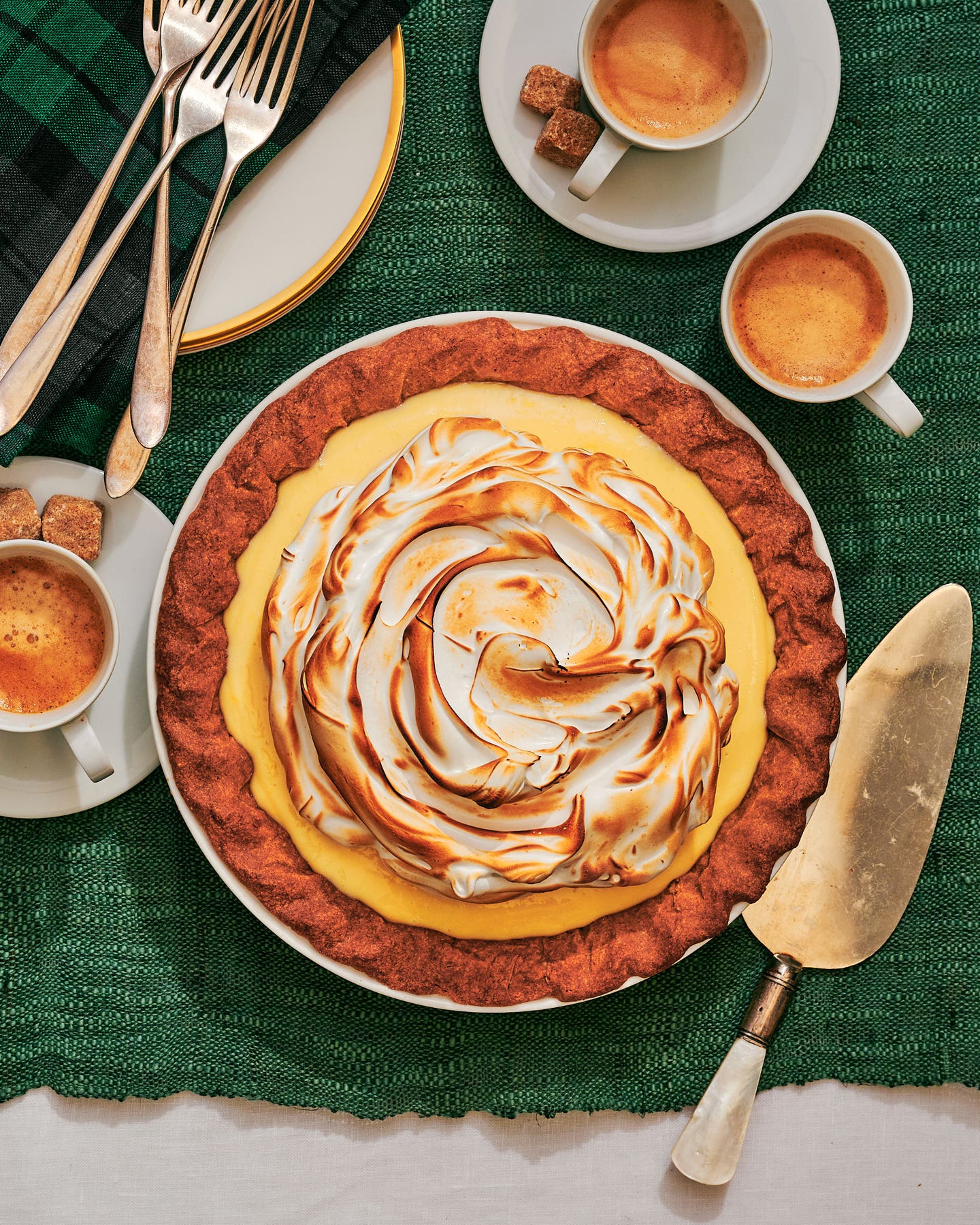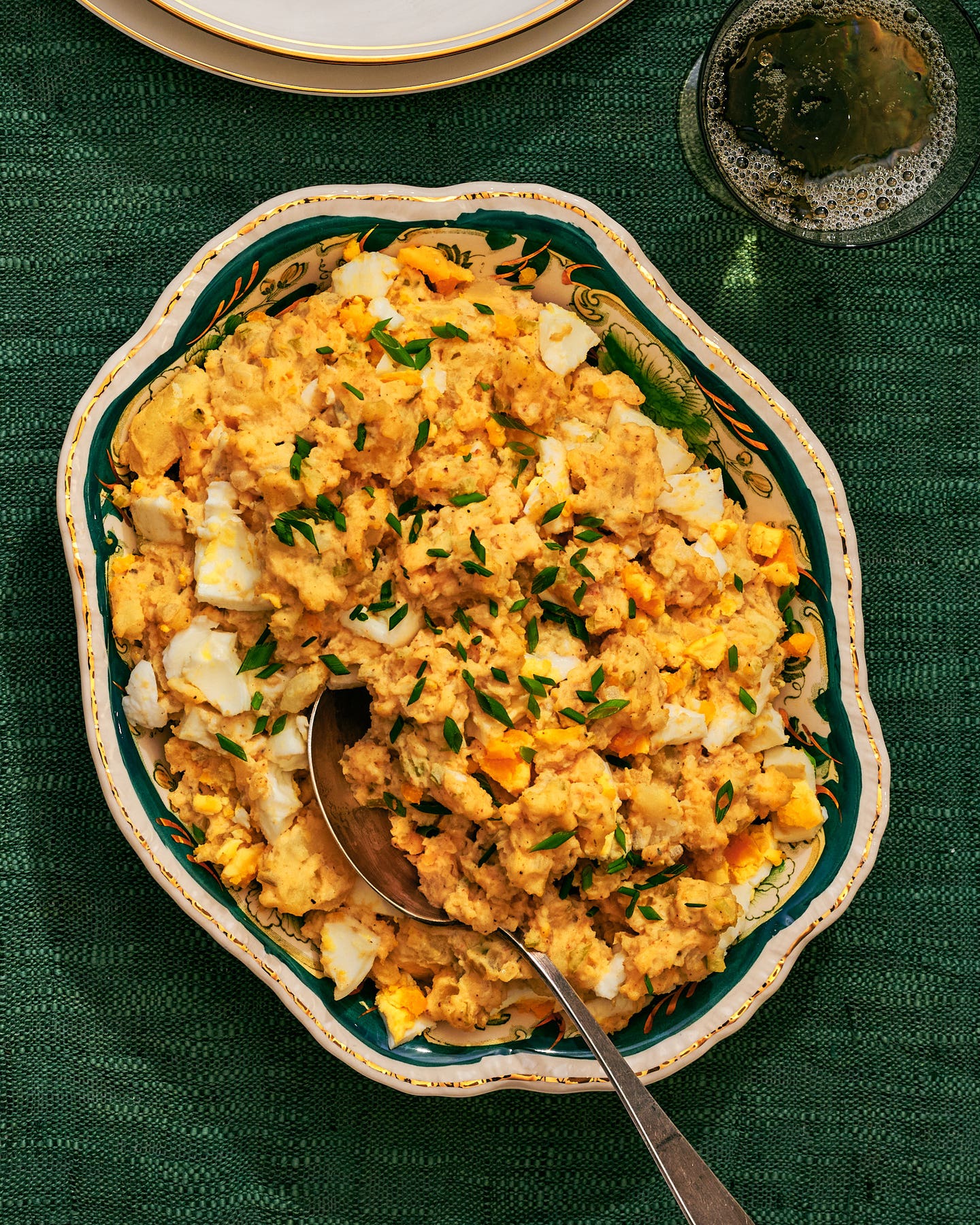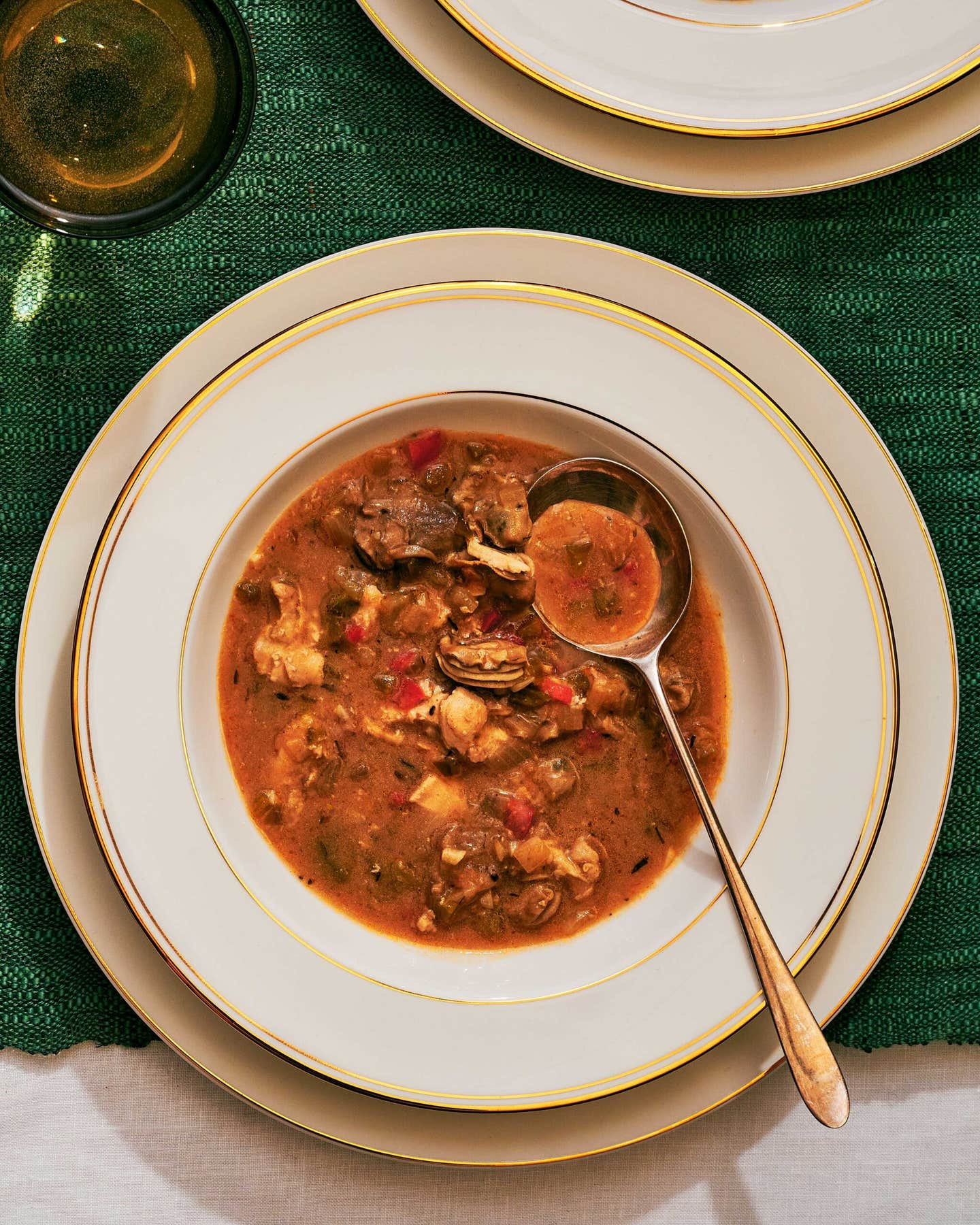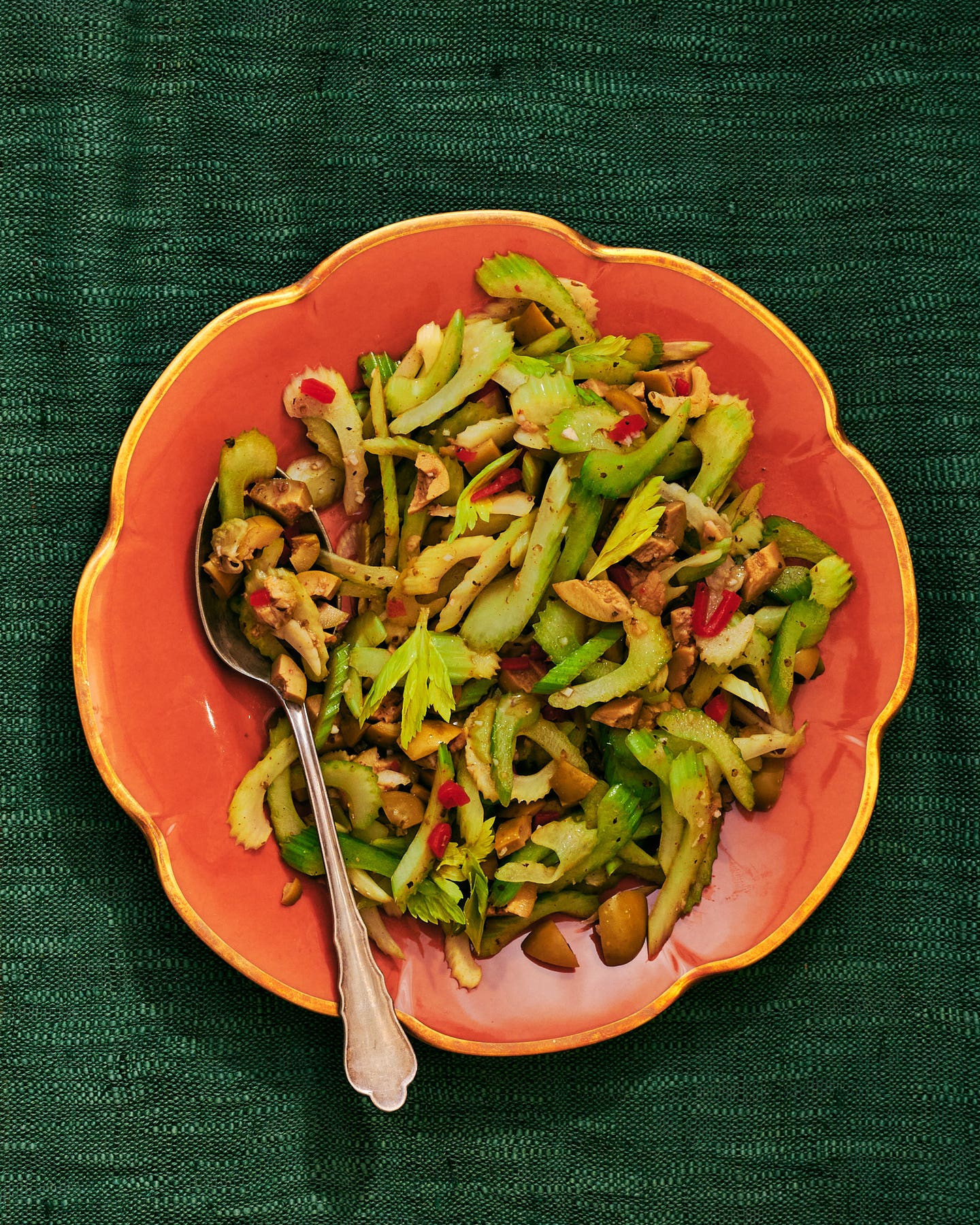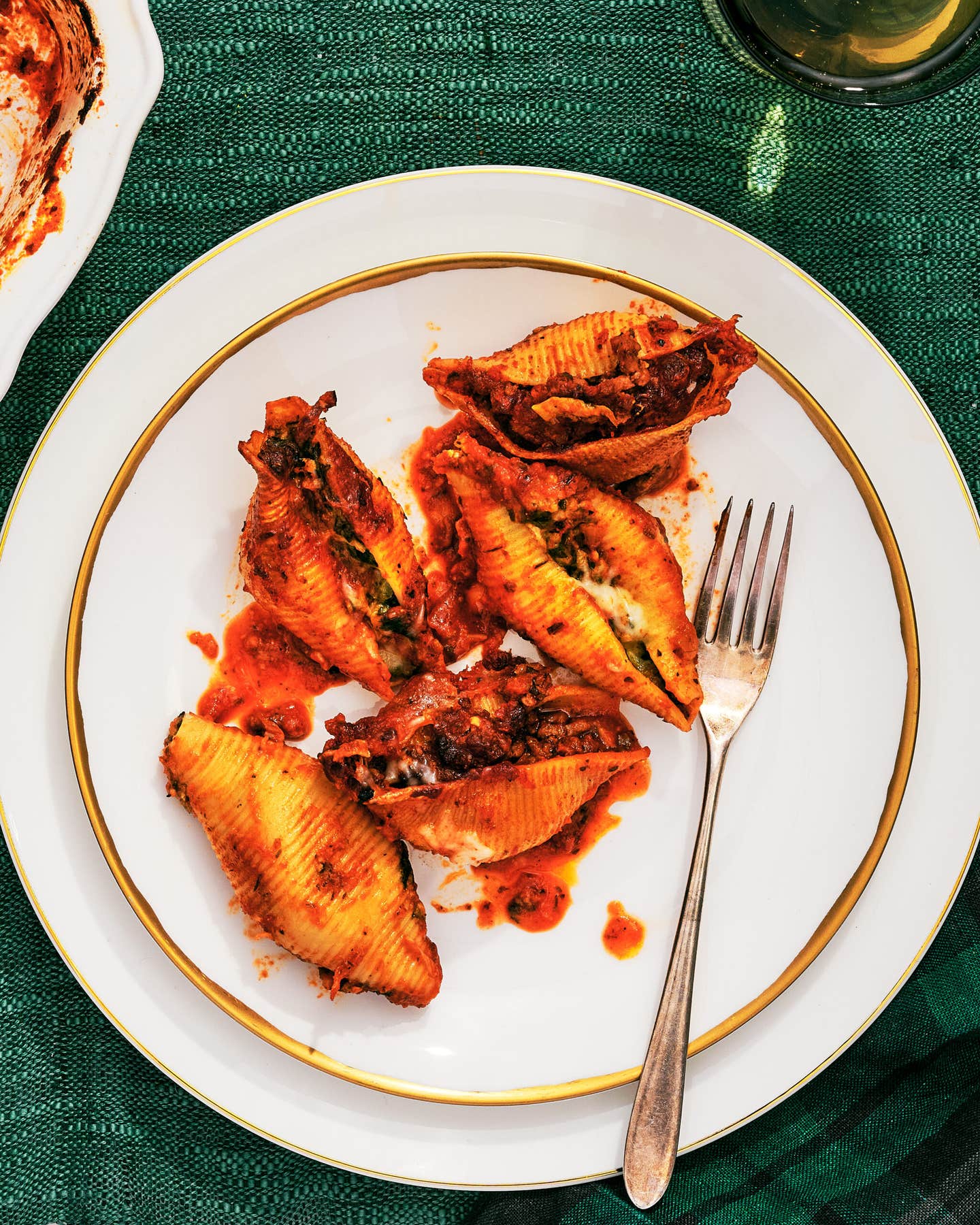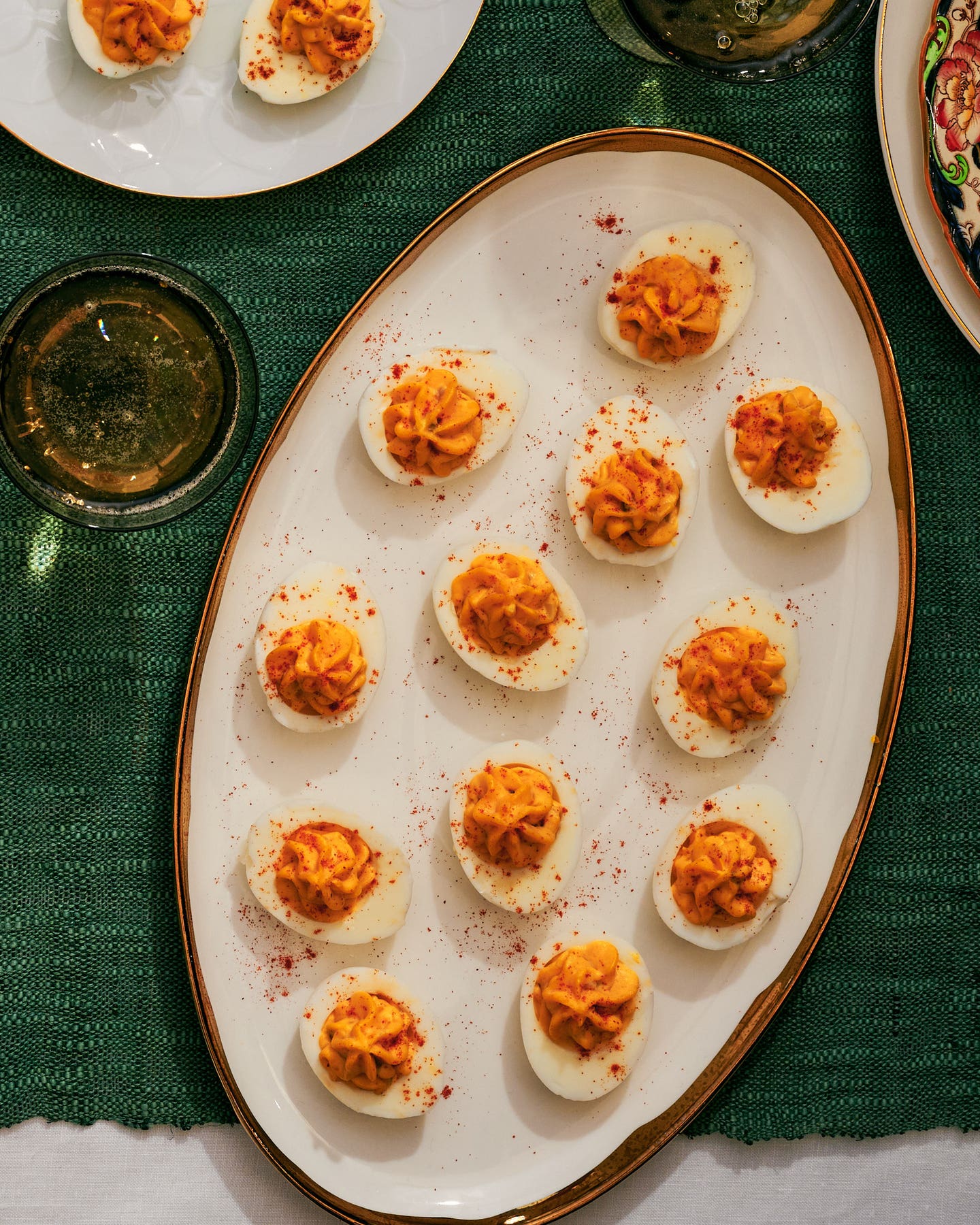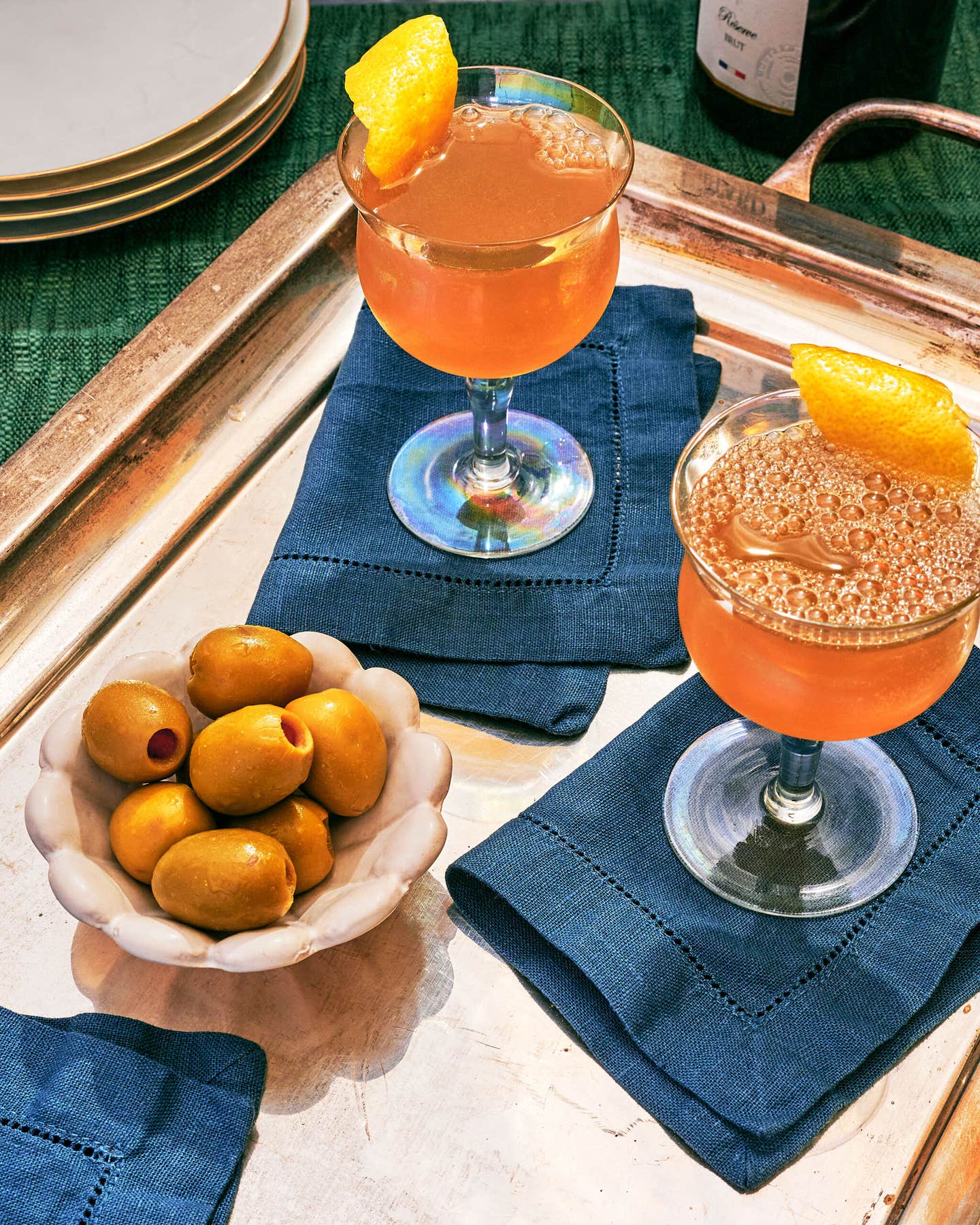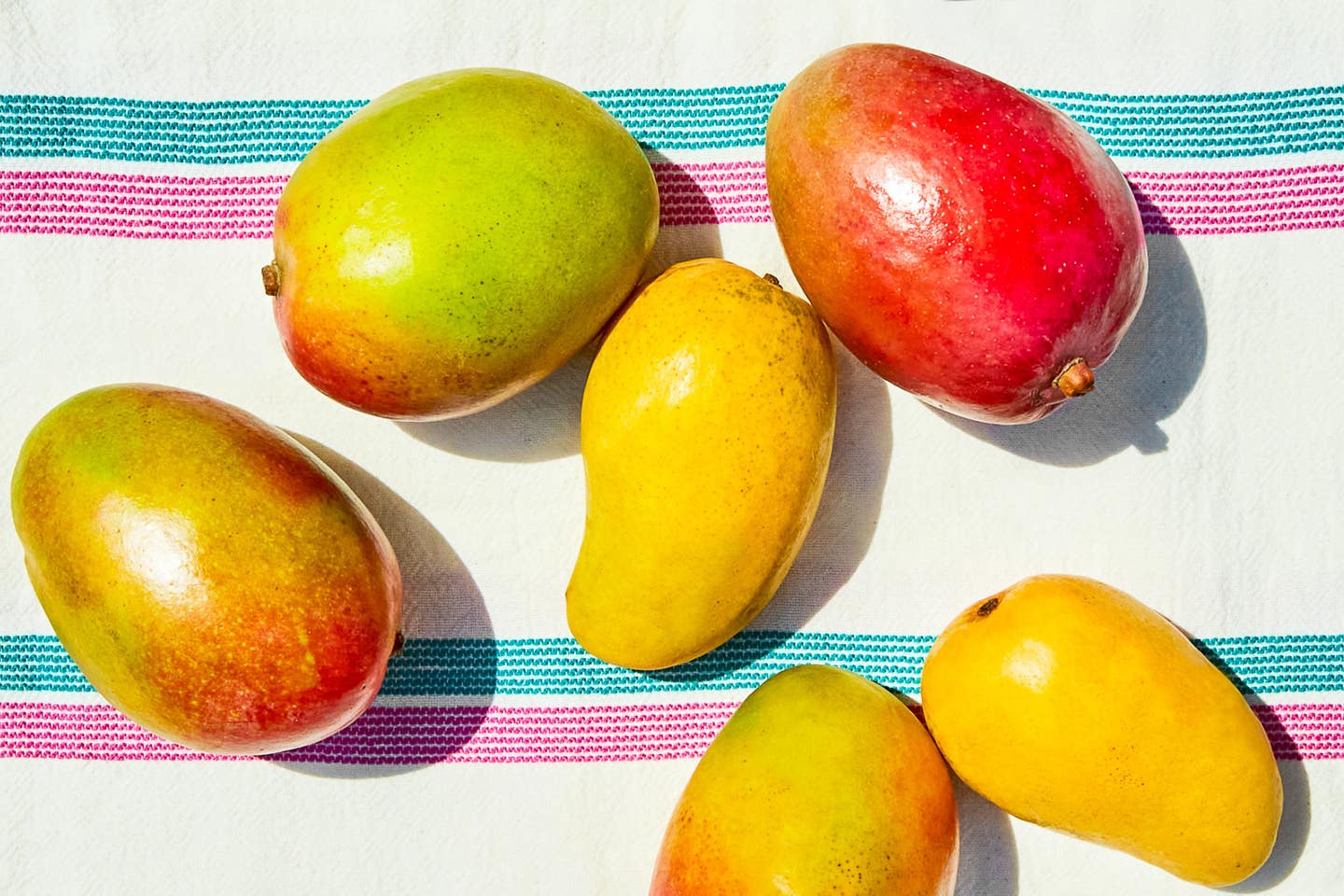
One morning I woke up to my mom shouting, "What are you doing in our mango tree?" Mid-bite, a young man, who had a burlap sack laden with mangoes, responded, "Well, Miss, you not eating them fast enough, and if I don't eat them, they go to waste!" That day my parents and I showed him—and anyone else judging the speed with which we ate our mangoes—that the Grays were not to be tested.
In the continental United States, yes, summer is associated with peaches, berries, corn, and tomatoes, but it's also peak mango season, which falls between May and September. In Jamaica, people go berserk at this time of year. It's not uncommon to find a stranger in your tree or have passersby knock at your gate asking if they can come in and pick some of your fruit. During their morning walks, retired folk help themselves to any fruit hanging over private fences into the common sidewalk or street. Even if you have a mango tree or three (like my family did), you always accept someone's gift of a dozen or more of the fleshy tropical fruit. There's even a Jamaican folk song called “Mango Time” that extols this peak season.
For millennia, Indian music, literature, and visual art have glorified mangoes. In fact, the tropical fruit, which is mentioned in Sanskrit texts over 5,000 years old, likely originated in India, though it has since spread throughout other parts of the world, including Africa, elsewhere in Asia, Central and South America, and the Caribbean. In Jamaica, we believe there's no such thing as having "too many mangoes," although more recently, we have begun to see the value in sharing this prized fruit with the outside world.
According to Jamaica's Ministry of Agriculture, the island sold approximately 100,000 pounds of mangoes to the United States between January and October 2020. This is a drop in the basket (see what I did there?) of the total amount sold in the US. Mangoes are such a seasonal treasure in Jamaica that some locals opt to keep every bit of the annual crop for themselves. But as many in the Caribbean islands have recently learned that tourism cannot be the only source of revenue, mangoes may become a prized value crop for the region. Until then, I'm lucky to be able to have my fill of juicy, sweet mangoes every day. Sometimes twice a day. Now I'm just rubbing it in.
Picking The Right Mango
In Jamaica alone, we are blessed with over two dozen varieties of mango. Globally, there are even more—in fact, there are over 500 named varieties of the fruit. Debates abound about which is the best; this is an argument that will never be won. Some prize the run-down-the-chin juiciness of the Alphonso. Others, including my mom, love the sweet stringiness of the tiny Number 11 or Saint Julian (Julie). I personally love meaty mangoes like the Bombay, East Indian, and Tommy Atkins, the latter of which is the most common and readily available in the States.
Choosing the right type and ripeness depends less on varietal street cred and more on what you plan to do with the fruit. If you are going to eat it on its own, go for full-flavored, sweet varieties like Alphonso, St. Julian, or Chausa/Chaunsa. Planning to blend the flesh into a beverage like mango lassi, or chop it into a salsa or chutney? In that case, a meaty, tart Tommy Atkins or Bombay will suffice.
The color of a mango’s skin does not necessarily indicate ripeness. Tommy Atkins are nearly always red and plummy, while even an unripe Ataulfo's skin would make Big Bird envious with its bright yellow glow. Instead of judging by appearance, select a mango as you would a peach or nectarine. The flesh should give slightly when squeezed, and when you take a sniff, the aroma should be unmistakable—somewhere between melon, pineapple, and very ripe peaches. This fragrance should unlock something exciting within you, like a tropical escape.
Some dishes and condiments require young (“green”) mangoes, or those that are not yet fully ripe (in Jamaica, we call these half-ripe fruit “turned”). For such recipes, opt for those meatier varieties I mentioned above that are easier to peel when green. But be warned: the sap from green mangoes can cause a chemical burn on sensitive skin. To avoid irritation, wear gloves when cleaning and cutting the fruit.
How To Cut A Mango
If you can't cut an avocado, then don't attempt to cut a mango. Just give up, move on, and buy a bag of the frozen stuff. If you wish to imitate an islander, you can use your teeth to bite into the skin of a thoroughly washed ripe mango and pull the peel downwards. But if you can wield a knife without additional adult supervision, here goes.
Certain varieties (particularly the Bombay) have a round “freestone” seed rather than a flat, elongated one. In those cases, you can halve the mango horizontally, twist the two ends apart, remove the seed, and scoop out the flesh.
However, for most other varieties, the easiest way to cut a mango—and how I do it, much to my parents' chagrin—is to cut off each side of the fruit lengthwise (“stem to nose”), leaving the middle with the seed behind. Score the flesh of each of the two “halves” into cubes, then use a spoon to scoop the fruit out. But don’t throw away the fruit surrounding the seed! Cut away any remaining flesh, remove and discard the peel, and slice, or chop the flesh into cubes.
Storing Mangoes
The best way to store mangoes is in a bowl on the counter. If you’re slow to consume them and dark spots appear, only then should you put them in the fridge.
If you want to store green mangoes, peel and slice, then toss the flesh in fresh lime juice before freezing to prevent oxidation.
And to ensure you have delicious, ripe mangoes through the winter, stock up during peak season. Peel and cube the fruit, pack into heavy-duty zip-top bags, and store in the freezer. In my experience, and that of my mother, frozen mangoes keep well for up to a year.
Recipes
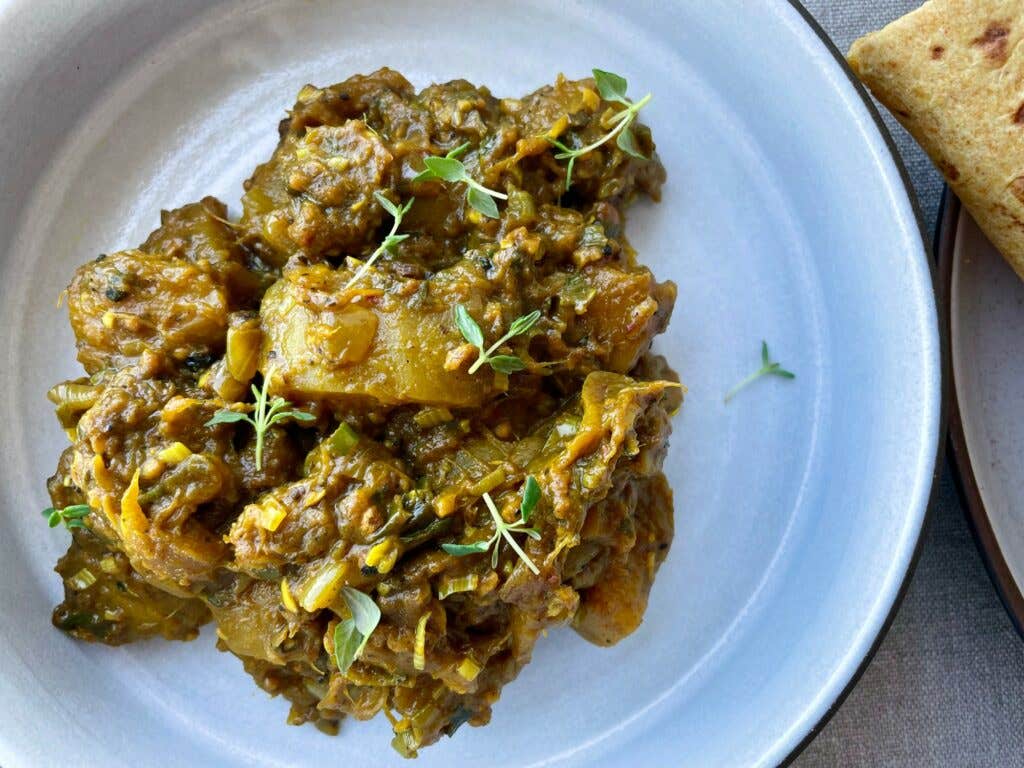
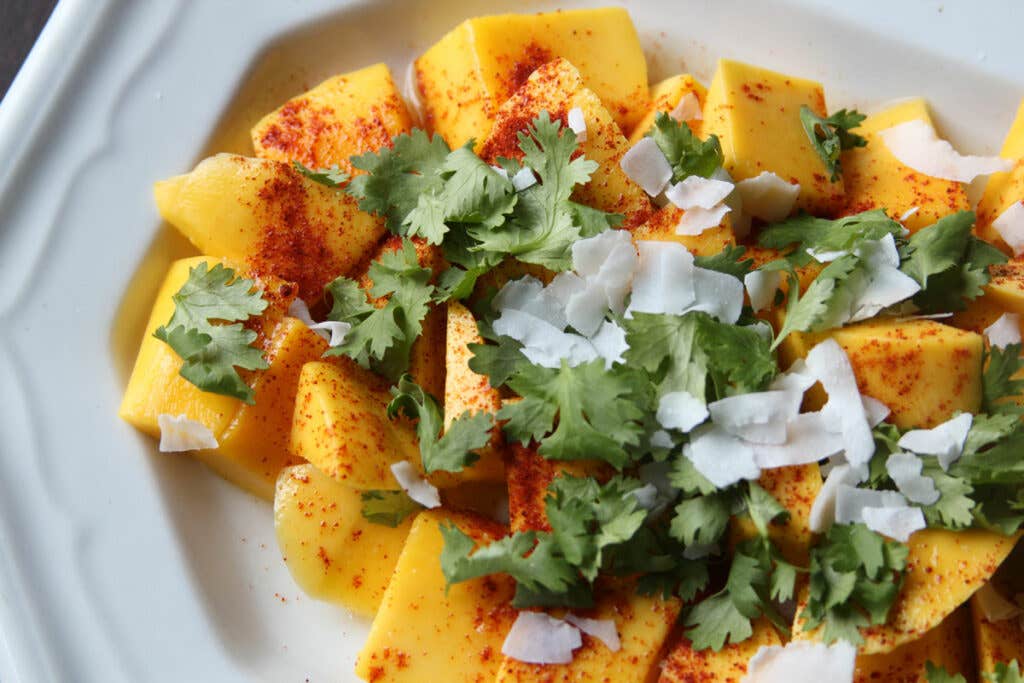
Keep Reading
Continue to Next Story


